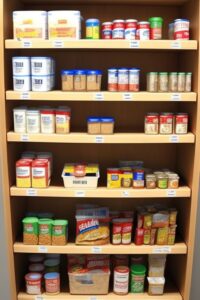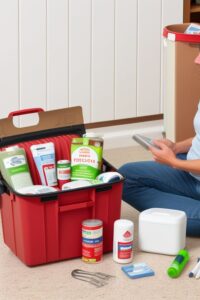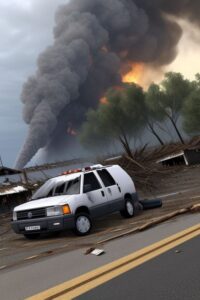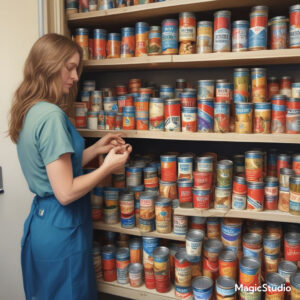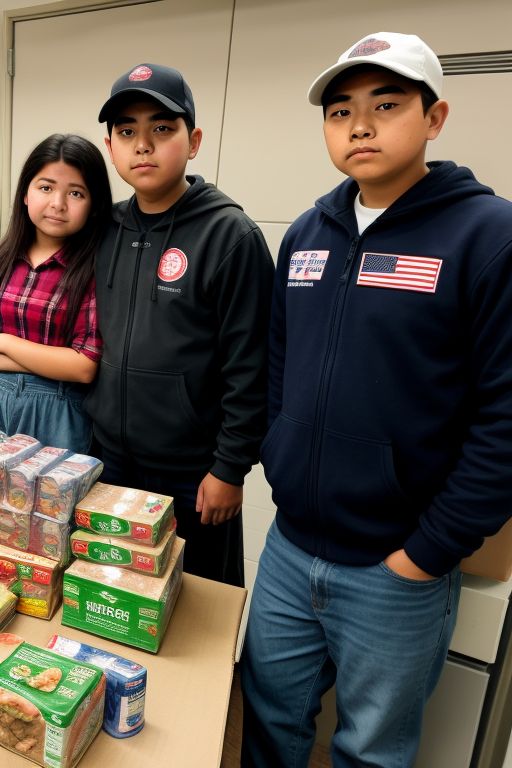
The upcoming 2024 presidential election has spurred a rise in doomsday “prepping” among younger Americans, a trend once seen only among survivalist fringe groups. Now encompassing all political affiliations, this trend highlights increasing worries about potential civil unrest and societal instability. The fear of chaos, fueled by a match between Vice-President Kamala Harris and former President Donald Trump, has pushed this once niche activity into the mainstream.
“Hoarding essentials like food, water, and weapons used to be associated with extreme libertarians,” says emergency preparedness expert Sarah Mitchell. “Now, it’s a practical step for many who worry about the future of our society.”
A Bipartisan Trend
Kylie Brooks, 35, from Oregon, operates a blog that provides disaster preparation tips specifically for younger, progressive urban residents. She expresses concern that new administration could mismanage responses to natural disasters. “Given the previous handling of Hurricane Maria and the COVID-19 crisis, there’s a legitimate fear of inadequate responses to future disasters,” Brooks states. “Climate change is escalating storm intensity, and we need to be prepared.”
Brooks has a three-month supply of food for her family of four. “Being prepared means we won’t drain emergency resources,” she explains. “In a crisis, my goal is to help my community, fostering cooperation rather than conflict.”
The Different Motivations for Prepping
Not everyone shares Brooks` community-focused mindset. Retired Marine Captain James Harris has established a network of secure locations across the country, equipped with food, fuel, renewable energy sources, and firearms. His members, who pay an annual fee, are ready to retreat to these fortified sites in case of civil unrest or other emergencies.
“We’re prepared for any scenario, from economic collapse to natural disasters,” Harris says, showcasing his facility’s defensive measures and stockpiles. “Our goal is to ensure survival and stability for our members, even if society falls apart.”
Harris’ clientele grew significantly following the 2020 protests and subsequent social turmoil. “Many fear that the upcoming election could trigger widespread unrest,” he observes. “We’re seeing a rise in people wanting to be prepared for any eventuality.”

Prepping Gaining Popularity Among the Young
Prepping has evolved into a multi-billion-dollar industry in the U.S., with younger generations leading the charge. Data from a recent survey by MarketWatch indicates that 42% of Millennials and 38% of Gen Z have invested in prepping supplies in the past year, a significant increase from previous years. This shift reflects a broader sense of unease and diminishing trust in governmental institutions.
Dr. Emily Carter, a sociologist at the University of California, Berkeley, attributes this trend to a growing perception of instability. “Younger people, especially those with progressive views, are losing faith in the government’s ability to manage crises effectively,” she explains. “They are turning to self-reliance and community-based preparation.”
The Range of Prepping Activities
John Stevenson, author of “Survivalist Nation,” notes a rise in liberal preppers who are now arming themselves. “Prepping used to be predominantly a right-wing activity, focused on self-defense and survivalism,” Stevenson says. “Now, many on the left are also preparing, driven by fears of political instability and environmental crises.”
Stevenson highlights the increasing militancy among both sides. “We’re seeing more people stockpiling not just food and water, but also firearms,” he observes. “As the election nears, this trend could escalate, particularly if the political climate remains contentious.”
The Importance of Community in Prepping
Brooks promotes a collaborative approach to prepping, advocating for mutual aid and community resilience. “Preparedness isn’t just about hoarding resources for oneself,” she insists. “It’s about ensuring that our communities can survive and thrive together.”
Her philosophy emphasizes the importance of interdependence and cooperation. “In times of crisis, we need to support each other,” Brooks argues. “Preparedness should build stronger, more connected communities.”
Final Thoughts
The surge in prepping among younger Americans ahead of the 2024 election highlights widespread concerns about political, social, and environmental stability. Whether driven by fears of authoritarianism, civil unrest, or natural disasters, this movement reflects a collective desire for self-sufficiency and readiness in uncertain times. As more people embrace this mindset, the focus on community resilience and mutual aid will be crucial in navigating potential future crises.
What do you think? Post a comment.
